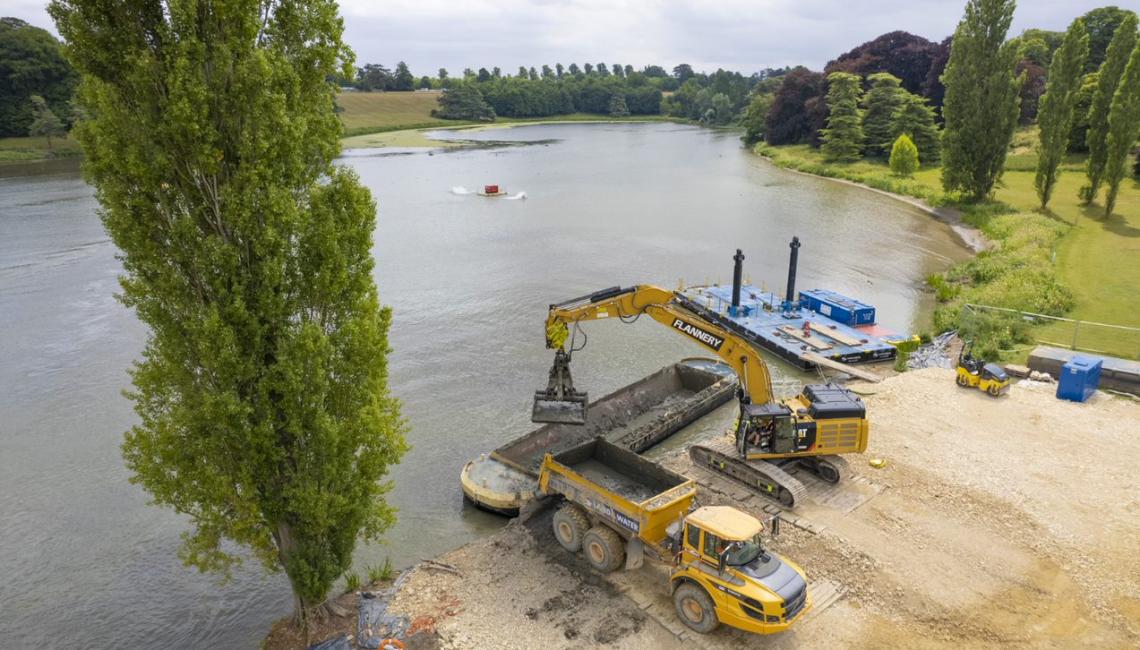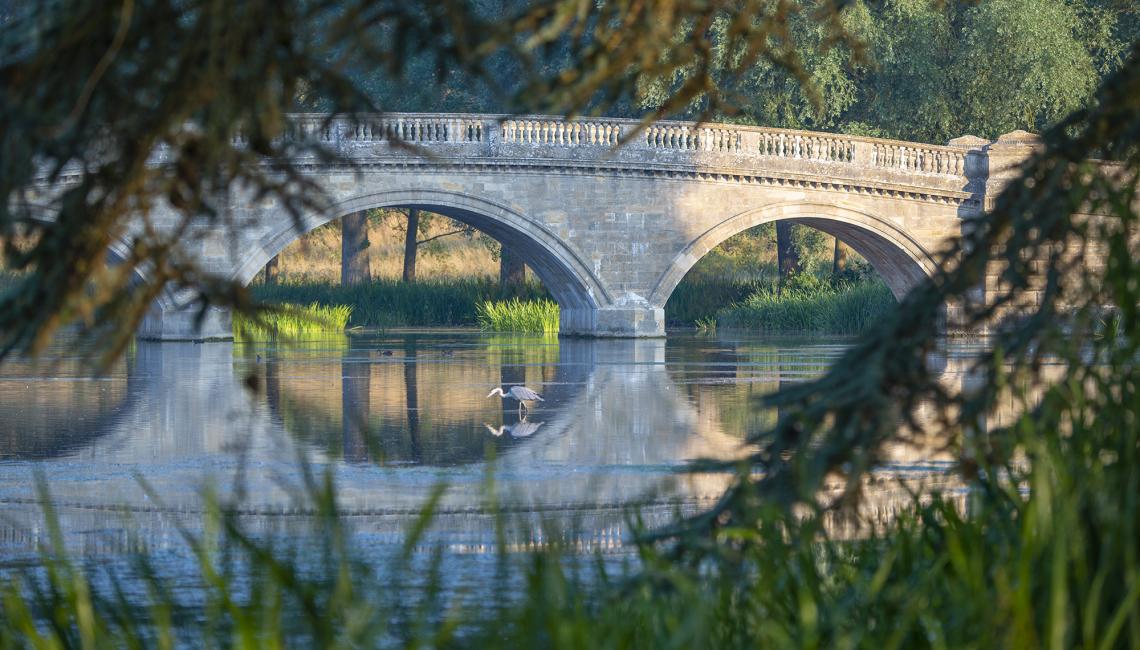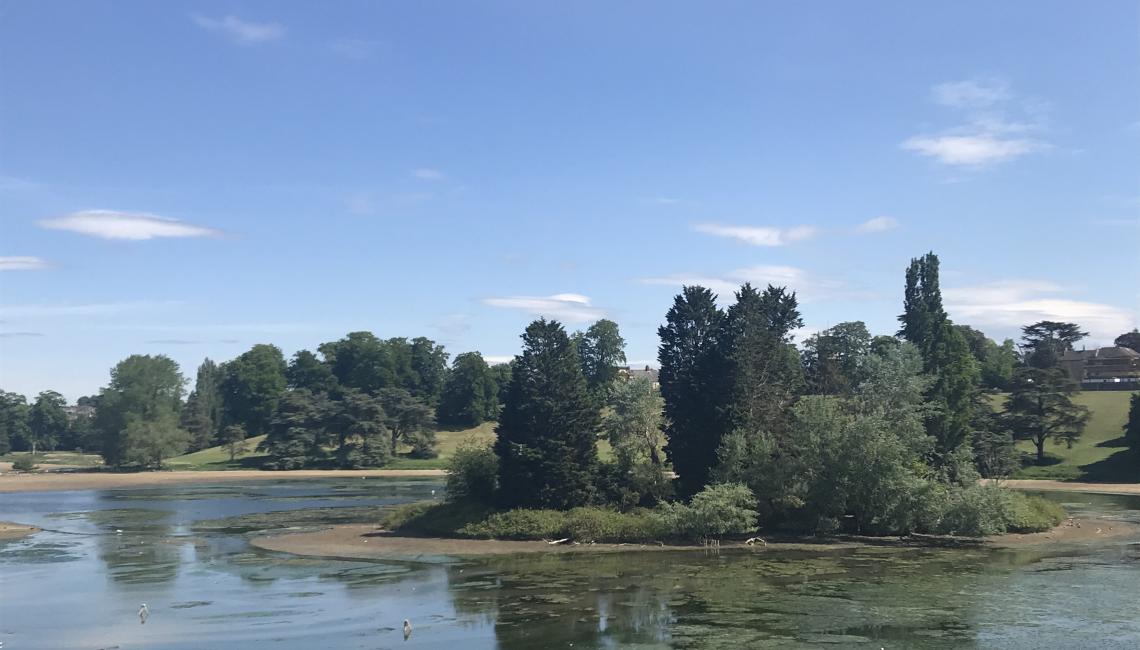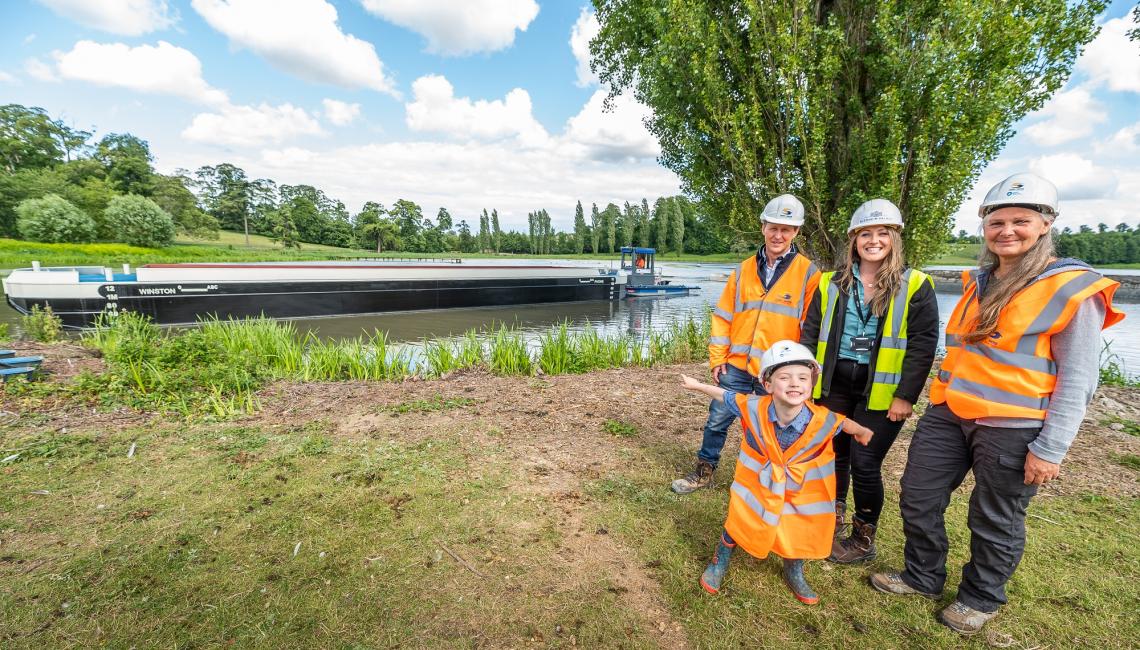Lake Dredge
Hear from the team behind our monumental Lake Dredge Project.
We are pleased to announce that we have now successfully completed the first dredge of the Queen Pool in over 100 years. The monumental effort has brought the lake back to life and returned it to its ideal depth of two metres, by removing over 300,000 cubic metres of silt.
Land & Water, a leading wet civil engineering firm that maintains and enhances the UK's network of waterways, helped us to dredge the silt from the Queen Pool. Charlie Oakes, Project Manager at Land & Water said, “our chosen methodology is designed to protect the lake bed as much as possible during the dredging with several pieces of equipment being specifically commissioned for this project”.
Have you taken a walk around the Queen Pool before? The circular route takes around 45 minutes and is a great way to see the Estate from many different perspectives, with a notable photo spot being the Grand Bridge.
Hear from the team behind our monumental Lake Dredge Project.

The project used a wet dredge technique, there were three diggers set on a floating platform which moved slowly across the full surface of the lake, dredging over the course of almost nine months. Along with the diggers, there were six hoppers which went backwards and forwards, bringing the silt from the platform to land. This removed silt was relocated up to Great Park, where we are creating a landform (a hill or mound) over 16ha. This land will then be returned to grassland.
Did you know, we had a local competition to name our Hoppers with names such as ‘Reg who likes to Dredge’ and ‘Mallard’ being selected as finalists.

In 1763, the 4th Duke of Marlborough commissioned Capability Brown to redesign the entire parklands to reflect the changing fashions. Brown’s vision was a huge change from the traditional formal gardens that had been popular amongst the wealthy families of England. He focused instead on the creation of natural landscapes, using brand-new construction techniques coming from the Industrial Revolution to bring his idyllic designs to life, ‘building’ rolling hills, wooded clumps, undulating lawns and vast lakes exactly the way he wanted them. While there were two bodies of water in the landscape, Brown’s plans were to make them much bigger.

First, he built a dam at the point where the river turned south to stop water getting into the excavations. The shape of the new lake was then created by hand: the sides were dug and packed down before barrow runs were installed. These runs were raised pathways with pulley systems powered by horse, mule or donkey that would haul the dug earth and rocks from the bottom in a wheelbarrow that was steered by a man. Once the lake had been shaped, the bottom was lined to make it waterproof with a mix of sand, clay and water. To compress and smooth this lining, Brown used a more traditional method: he employed flocks of sheep to walk back and forwards to ‘puddle’ the clay into the earth. Once the new basins were completed, it took about a year for the lakes to refill.

The lake to the east had originally been named Duchess’ Lake after the 1st Duchess who had created the pool in 1715. When the lake was extended by Brown, as well as going up the Grand Bridge, he also took the lake further east towards Woodstock, incorporating the Queen Pool, a small fish pool that was known to have been a favourite place of King Edward III’s wife Queen Philippa. While the pool was submerged, its name stuck and the new lake became known as Queen Pool.

3 diggers – on a floating platform.
6 hoppers – bringing the silt to land.
9 months – how long the dredge will take.
300,000 cubic metres – of silt will be removed.
100 acres of farmland – where the silt will be transferred and spread for drying.
3 months – how long it will take to remove all the equipment once the dredge is complete.

One of the first things that happened before the dredge began, was moving the water voles to their new home across the lake, along with the fish which were moved back in 2018 when the water level was lowered for work on the bridge and cascades. We worked with Ecologists to make sure that the moving of the voles followed the good practice set out in the water vole Conservation Handbook, and fully licensed by Natural England.